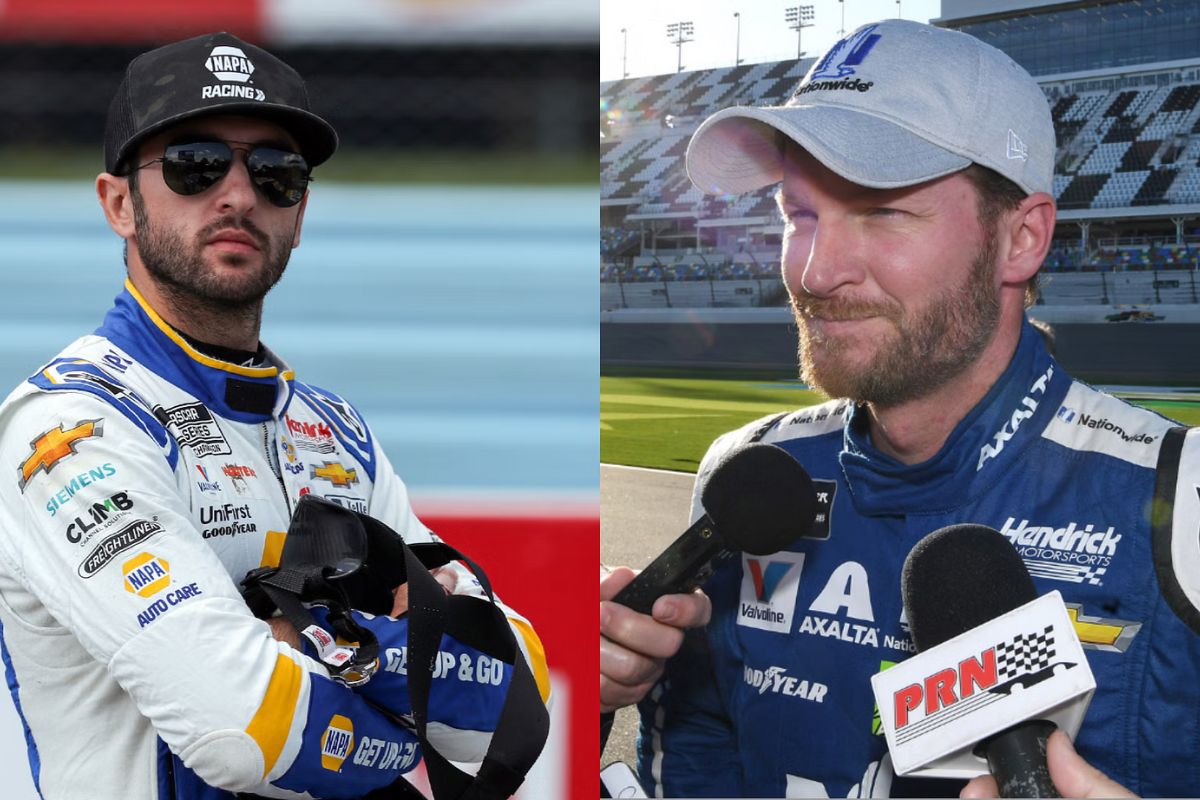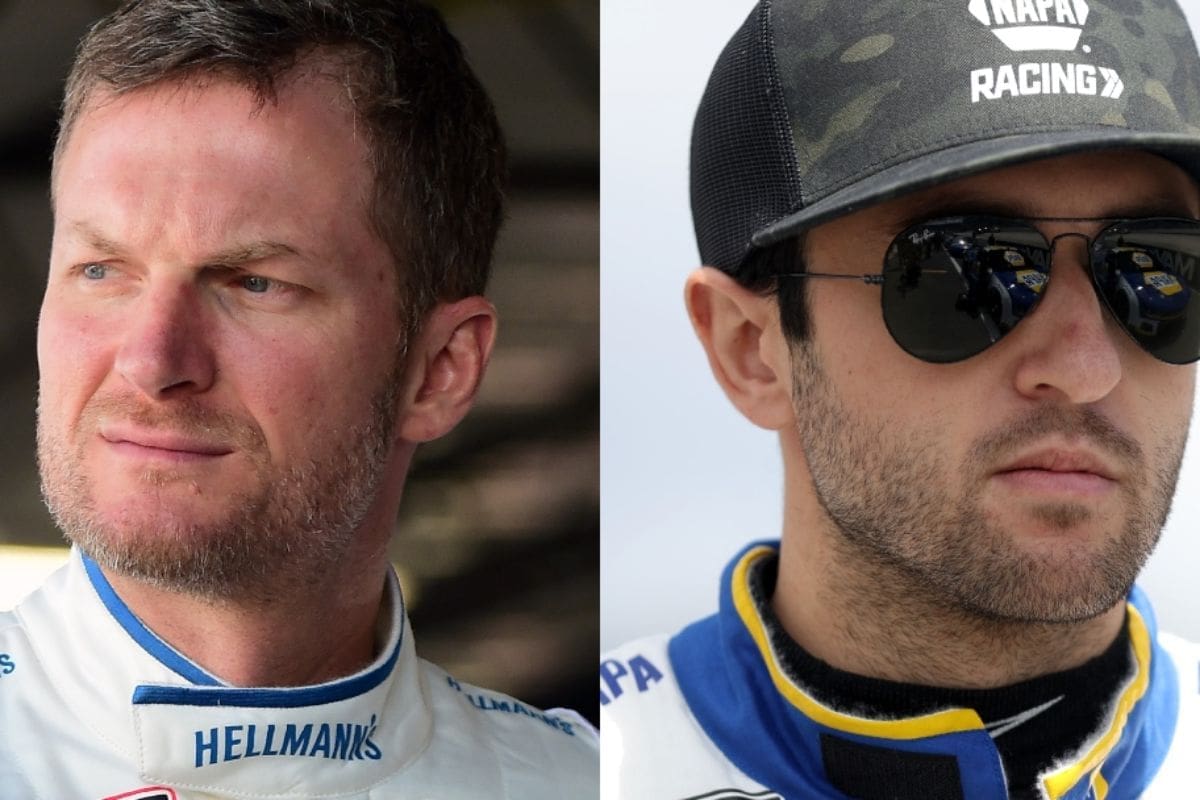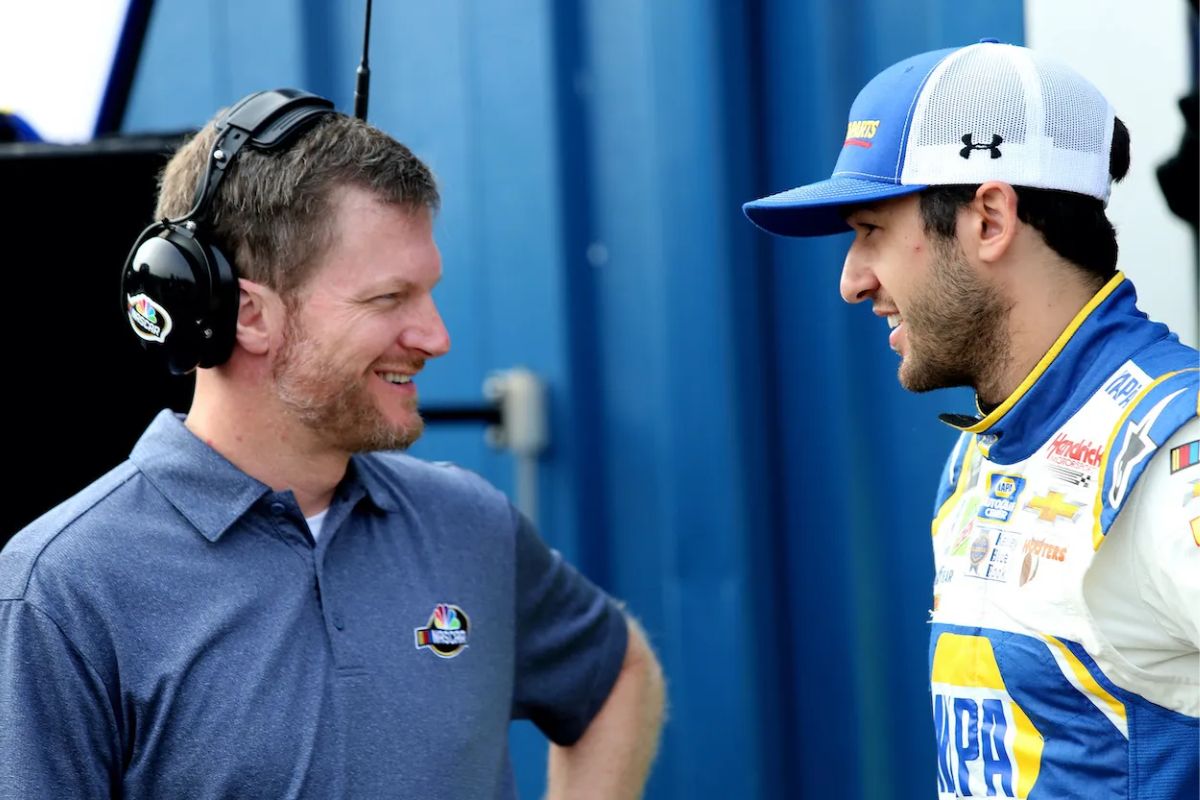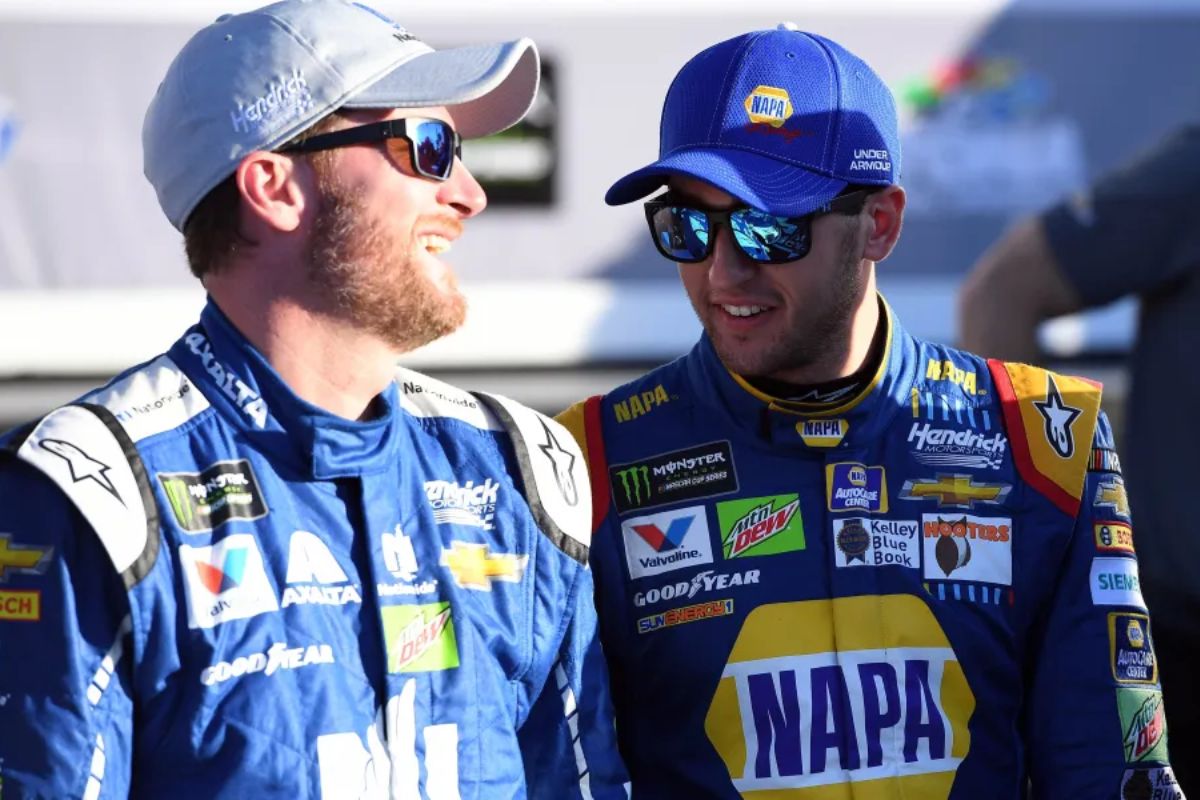Dale Jr.’s Bold Prediction: In NASCAR, Dale Earnhardt Jr.’s recent prediction that Chase Elliott’s nemesis is set for a comeback shows the inevitable cycles of rivalry and competition that define this sport. This forecast is particularly compelling considering Elliott’s current form and the psychological edge that past rivalries reintroduce to the racetrack.
Key Takeaways
- Dale Jr. predicts a rival’s resurgence challenging Chase Elliott in upcoming races.
- The nemesis’s return could intensify competition and affect Elliott’s performance.
- This rivalry may draw significant attention, boosting viewership and fan engagement.
- The prediction suggests increased strategic plays and on-track dynamics.
- Enhanced rivalry could test Elliott’s skills and resilience under pressure.
Chase Elliott Wins at Texas, but Track Conditions Spark Controversy
Chase Elliott’s victory at the Texas Cup Series race was overshadowed by a chorus of concerns regarding the track conditions that compromised safety and started controversy among drivers. The victory, though significant for Elliott’s career, quickly fall back into the background as the narrative shifted towards the broader implications of the track’s state. As drivers like Denny Hamlin openly criticized the conditions underscoring the tension between competitive racing and operational safety standards.
The criticism from multiple competitors about the track’s nature not only highlights individual grievances but also casts a spotlight on the systemic issues within track management and oversight. Such feedback, especially coming from seasoned drivers, raises critical questions about the sufficiency of pre-race evaluations and the processes used to safeguard driver safety.
Dale Earnhardt Jr.’s Insights on Goodyear Tires
Amidst the ongoing debate over track safety, Dale Earnhardt Jr. highlighted the significant role that Goodyear tires play in the quality of racing dynamics. On his podcast, The Dale Jr Download, Earnhardt discussed the of tire performance and its direct impact on race outcomes. He specifically pointed out issues with the current left-side tire compound, advocating for a switch to a softer compound to enhance grip and subsequently, the racing experience.
“Goodyear is right there, they’re so close. But I’m telling you, man, when I look at that race track and I see that right side tire doing such a great job putting rubber down and the left side actually keeping that part of the track clean. Once that left side gets to where it’s rubbering the track just like the right side is, and that entire groove from the apron, that entire bottom groove is covered in rubber, the balance out the groove on the bottom of the race track will get tighter and tighter. And the cars will have to slow down to make that bottom work. That’s when they’ll move up,”- dale Jr.
Earnhardt’s insights suggest that Goodyear’s current tire setup may not be fully optimized for conditions at tracks like Texas, where tire grip becomes a critical factor in navigating the high-speed turns effectively. The softer compound, according to Earnhardt, could lead to more dynamic racing by allowing drivers to push their cars closer to the edge without losing control.
Earnhardt’s push for a change reflects a deep understanding of how minute adjustments can lead to significant improvements in the sport His critique and subsequent recommendations offer a path forward that could revolutionize the approach to tire usage in NASCAR races.
Goodyear’s Role in Enhancing Racing at Texas
Goodyear’s strategic interventions in tire technology have been critical in transforming the racing experience at Texas Motor Speedway. The development of tire compounds, particularly the differentiation between the left and right side tires. Dale Earnhardt Jr.’s recent observations shows the critical nature of this ongoing tire evolution. He commended the performance of the right-side tires for effectively laying rubber on the track, which is essential for maintaining grip and stability during high-speed races.
However, Earnhardt pointed out that the left-side tire compound might be too soft, which poses a challenge in achieving the ideal balance necessary for excellent racing conditions. This insight is particularly valuable as it highlights the delicate interplay between tire wear and track interaction.
“I would think they don’t want that left side to be soft because that makes the car fast. They can play with the right side being harder or softer because it’s just gonna wear out and fall off and slow down. But when they make the left side softer and that side of the car doesn’t take as much abuse and load as the right, putting a soft left side tire is just gonna make the car go faster” – dale Jr.
Concerns Over Corner Speed and Safety
While Goodyear’s tire innovations at Texas Motor Speedway have greatly boosted performance, Dale Earnhardt Jr. has raised concerns regarding the potentially hazardous effects of increased corner speeds on both racing quality and driver safety. Earnhardt’s apprehensions about the potentially risky effects of faster corner speeds stem from a understanding of race dynamics. He expressed that excessive speed in corners doesn’t just escalate the risk of accidents; it could also degrade the overall quality of racing by reducing opportunities for strategic overtaking.
“Drivers really don’t want more corner speed. That makes the racing bad, but if they can make that tire wear, it’ll only be fast for a moment. It’ll only be fast for a short period of time. 10 laps or so before it actually started to lose grip and slow down. But then you’re rubbering the bottom 3 or 4 feet of the race track making that slick. That balance change on that bottom groove is more significant to where getting up into that second, third, or even fourth groove, the car’s gonna have more turn, more speed, more speed down the straightaways, that’s when you’re gonna see the big runs, the blocking, the arguing that we want to see”- dale Jr.
Earnhardt’s critique invites a deeper analysis of how tire performance influences race outcomes. Tires that allow cars to take corners at higher speeds potentially contribute to reduced lap times, which is a clear advantage from a performance standpoint. However, the flip side is that higher corner speeds can lead to higher g-forces, placing more stress on both the vehicle’s components and the drivers. This increased load can exacerbate tire wear, pushing vehicles closer to their mechanical limits and increasing the likelihood of tire failure, which can have bad consequences at high speeds.
Striking the Perfect Balance: Goodyear’s Next Steps
Facing the challenge of enhancing tire performance while ensuring safety, Goodyear stands at a crucial phase in their approach to motorsport innovation. Dale Earnhardt Jr.’s recent insights into the ongoing development suggest a focused strategy on balancing tire wear with the dynamic needs of racing. This balance is critical not only for the performance of the vehicles but also for the safety of the drivers, a concern that has been at the forefront of recent discussions.
The endeavor to optimize tire wear without compromising on corner speed involves a fine-tuning of tire compounds and structures. Earnhardt’s optimism is rooted in Goodyear’s historical ability to innovate under pressure. The task ahead is complex, involving layers of engineering challenges with the unpredictable nature of motorsport racing environments.
| Focus Area | Description |
|---|---|
| Tire Compound | Development of materials that offer better grip and durability without quick degradation. |
| Structural Integrity | Enhancing the tire’s ability to withstand high speeds and pressures, ensuring safety. |
| Performance Feedback | Implementing mechanisms for real-time performance feedback from tires during races. |
News in Brief: Dale Jr.’s Bold Prediction
Dale Earnhardt Jr.’s prediction about the resurgence of Chase Elliott’s nemesis shows the dynamic nature of competition in NASCAR. Such rivalries not only intensify the races but also highlight the strategic nuances that teams and drivers must navigate. Additionally, the ongoing adjustments by Goodyear in response to track conditions and safety concerns play an essential role in shaping race outcomes, emphasizing the fine balance between performance enhancement and racer safety.
Our Reader’s Queries
Q. How good is Dale Earnhardt Jr.?
A. Earnhardt boasts 26 victories in the Cup Series, a tally that places him in a tie for 32nd position in NASCAR’s annals, alongside Fred Lorenzen, as of March 2023.
Q. Is Chase Elliott related to Bill Elliott?
A. The number 9 holds significant legacy for Chase Elliott, tracing back to his father Bill Elliott’s glory days in the 1980s. Making his mark in the NASCAR Cup Series, Elliott commenced his rookie season in 2016 with a splash, clinching the pole position at the prestigious Daytona 500. His impressive debut continued as he secured a spot in the Chase for the NASCAR Cup, joining an elite group as only the third rookie in history to enter the playoffs.
Q. Why did Dale Jr. stop racing?
A. In his decision to step away from full-time NASCAR competition, Earnhardt aimed to take the reins of his own fate. He articulated his rationale, stating, “I had a lot to contemplate over the past few months, and I found myself uncertain about the possibility of competing this season.”
ALSO READ: Dale Jr Slams NASCAR’s Safety Plans: Concerns Arise




